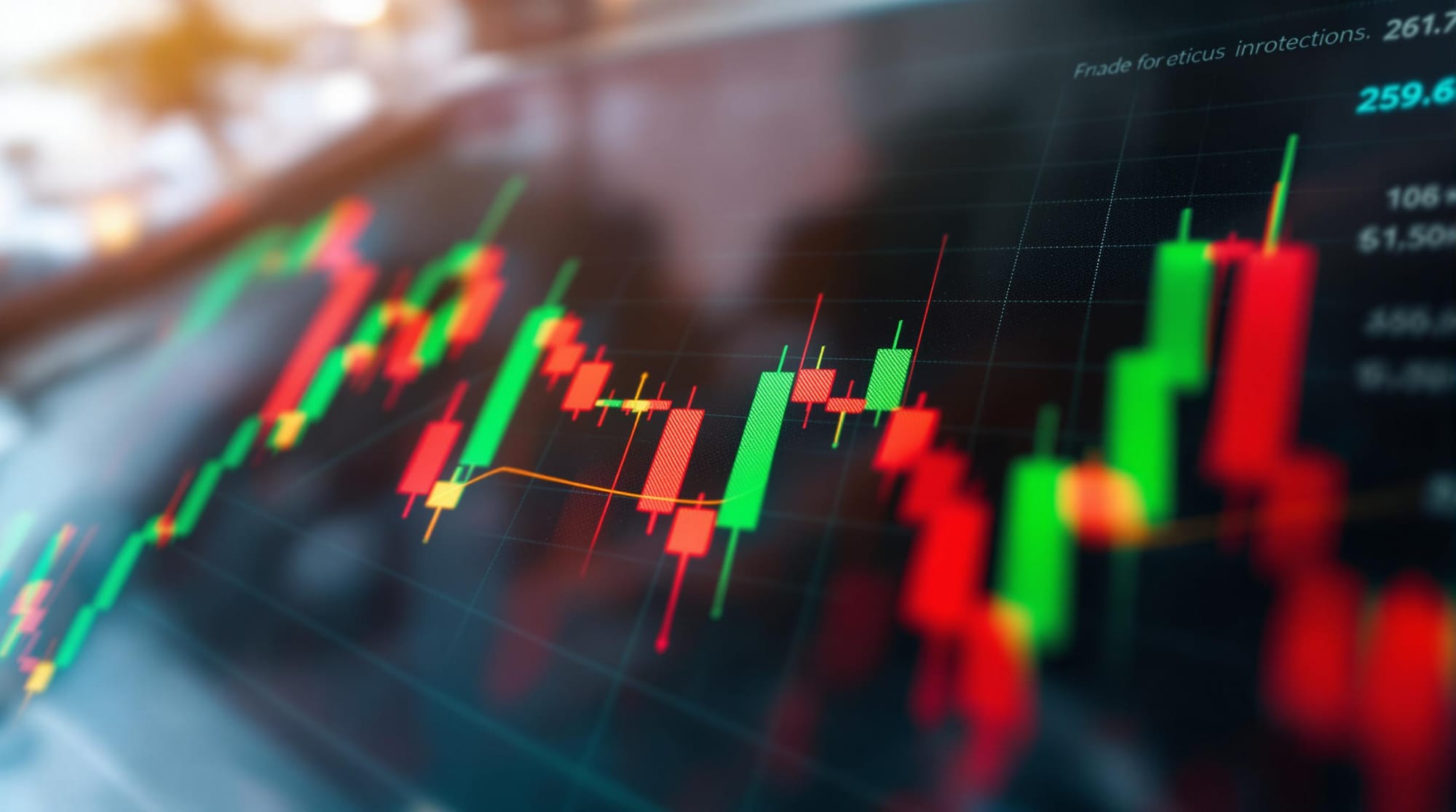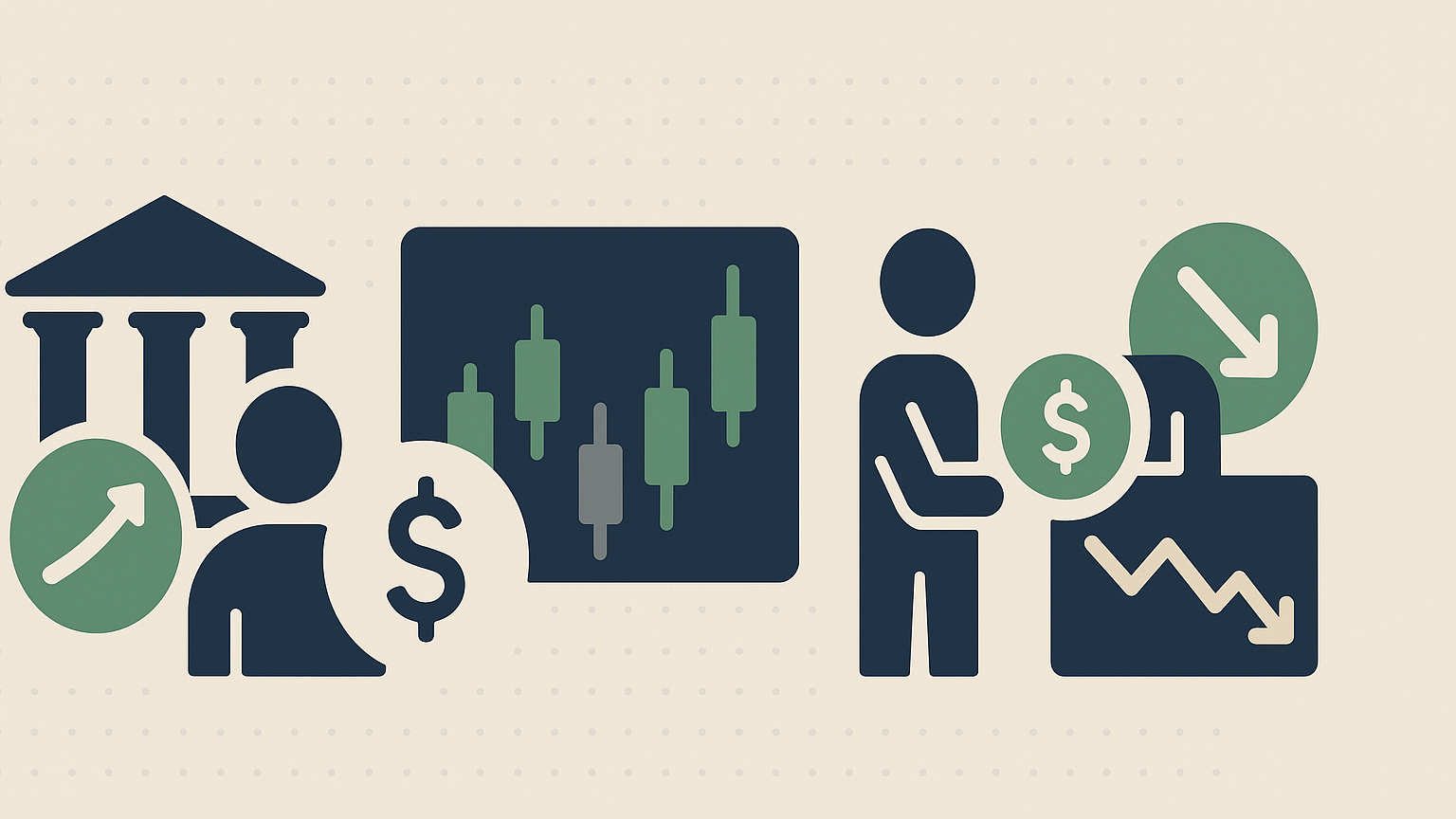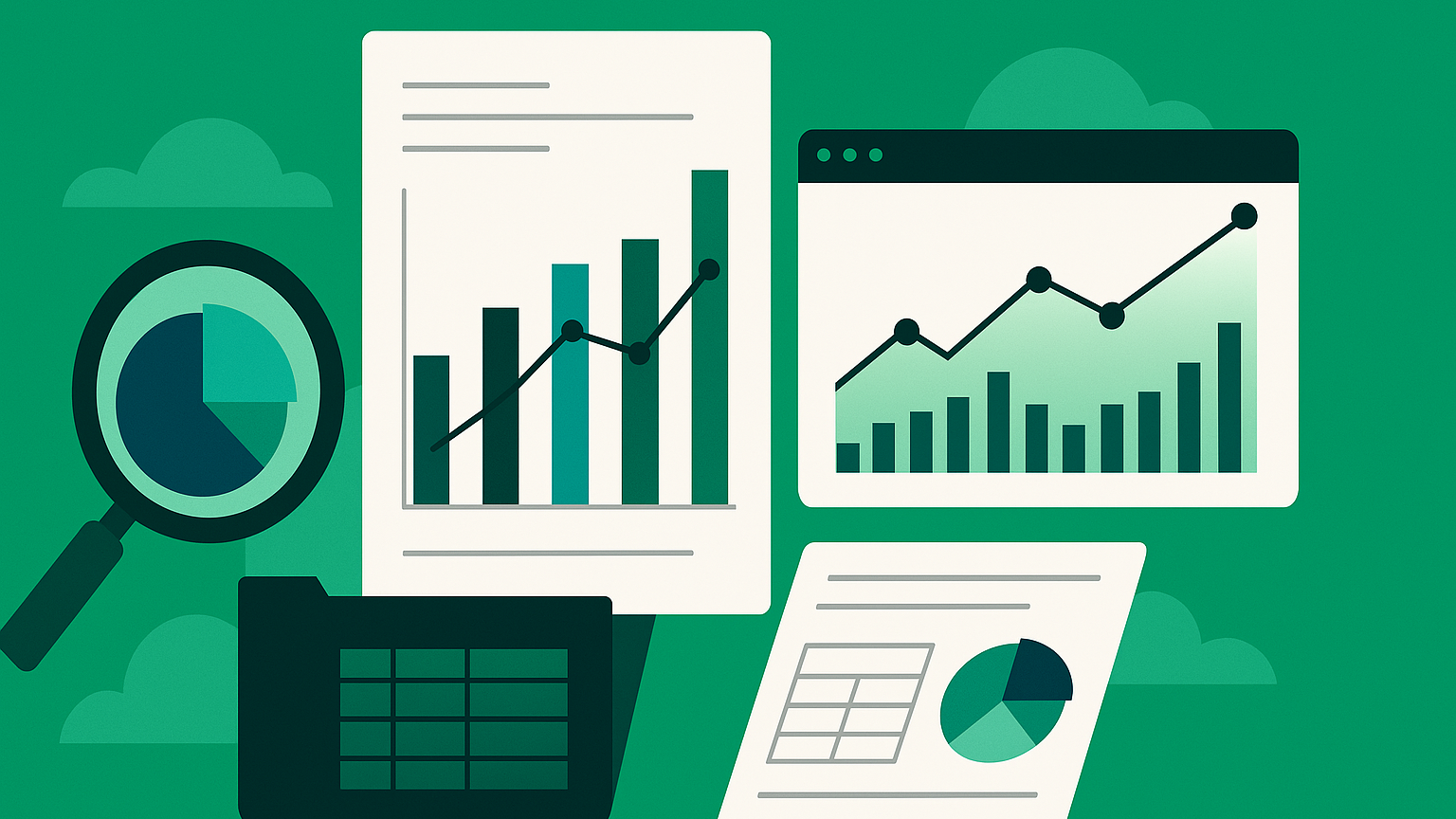Learn the essentials of margin accounts, including risks, costs, and how they can enhance your trading power effectively.
Margin accounts let you borrow money from your broker to trade securities, boosting your buying power. But they come with risks, like amplified losses and margin calls. Here’s what you need to know:
- Initial Margin: You can borrow up to 50% of a security's purchase price (Regulation T).
- Maintenance Margin: Keep at least 25% equity in your account (FINRA rule).
- Costs: Brokers charge interest on borrowed funds, ranging from 6% to 13%.
- Risks: Losses can exceed your initial investment, and margin calls may force you to sell assets.
- Key Features: Leverage for larger trades, access to advanced strategies like short selling, but higher risk compared to cash accounts.
Quick Comparison:
| Feature | Cash Account | Margin Account |
|---|---|---|
| Funding Source | Your money only | Your money + broker loans |
| Trading Options | Basic stock trades | Options, futures, short selling |
| Risk Level | Limited to investment | Losses can exceed initial funds |
| Maintenance Margin | None | At least 25% equity required |
Margin accounts offer opportunities for higher returns but demand careful risk management. Always monitor your account, maintain a cushion above margin requirements, and use strategies like stop-loss orders to minimize risks.
Margin Account Basics
Core Features
Margin accounts stand apart from standard accounts by allowing you to borrow money from your broker to buy securities. This means you can use leverage, which involves using borrowed funds that must be repaid with interest. Regulations generally allow you to borrow up to 50% of a security's purchase price, effectively doubling your buying power. Let’s dive into how margin accounts differ from cash accounts.
Cash vs. Margin Accounts
The key distinctions between cash and margin accounts affect both your trading options and risk levels:
| Feature | Cash Account | Margin Account |
|---|---|---|
| Funding Source | Your money only | Your money + broker loans |
| Trading Options | Basic stock trades | Options, futures, short selling |
| Risk Level | Limited to invested amount | Losses can exceed initial investment |
| Settlement Requirements | Wait for trades to settle | Trade immediately using borrowed funds |
| Maintenance Requirements | None | Minimum 25% equity required |
This comparison highlights how margin accounts provide more trading flexibility, but they also come with higher risks.
"Get used to your new account first. Experience what it's like to buy and hold investments, monitor the account balances, and transfer money between the brokerage account and your checking account. Once you flex those muscles, consider adding the margin feature if and when there's a need." - Sandi Bragar
Now that we've covered the differences, let's look at the specific criteria for opening a margin account.
Opening Requirements
If you’re considering a margin account, it's essential to understand the stricter rules that come with it:
- Minimum Account Value: $2,000 as required by FINRA
- Initial Margin: 50% of the purchase price
- Maintenance Margin: At least 25% equity must be maintained
Keep in mind, individual brokers may impose additional requirements based on factors like:
- Account concentration
- Liquidity of securities
- Market conditions
- Overall portfolio structure
"Trading on margin involves additional risk, so before placing any trades, be sure you understand the requirements and industry regulations that govern margin borrowing." - Fidelity
Before you can start trading on margin, you’ll need to sign a margin agreement. This document outlines the rules, risks, and your acknowledgment of the complexities involved in margin trading.
How Margin Trading Works
Margin Requirements
Margin trading operates under Regulation T, which defines two key thresholds:
- Initial Margin: You need to deposit at least 50% of a security's purchase price upfront. For instance, if you're buying $10,000 worth of stocks, you must provide $5,000, while your broker lends the remaining $5,000.
- Maintenance Margin: Your account equity must stay above 25% of the total market value of your holdings. However, many brokers set stricter limits to manage risk effectively.
Here’s a quick breakdown of typical margin rules for specific scenarios:
| Account Scenario | Initial Margin | Maintenance Margin |
|---|---|---|
| Concentrated Position (>60% in one security) | 50% | 50% |
| Low-priced Stocks (<$3) | 100% (non-marginable) | 100% (non-marginable) |
These thresholds form the foundation for using borrowed funds in trading.
Using Borrowed Funds
Once you meet the requirements, margin trading boosts your buying power by letting you borrow funds to expand your portfolio. Brokers charge interest on these loans, and rates can vary. To make the most of margin, consider the following:
- Borrow less than your maximum limit.
- Use margin for short-term trades.
- Keep extra cash reserves as a safety net.
- Focus on investments with returns that surpass borrowing costs.
Costs and Margin Calls
A margin call happens when your account equity drops below the maintenance margin due to market losses or accrued interest. In such cases, you'll need to add funds, deposit securities, or sell positions. Brokers can sell your securities without prior notice, decide which positions to liquidate, and even sell more than necessary to cover the deficit.
To reduce the risk of margin calls, follow these strategies:
| Prevention Strategy | Implementation |
|---|---|
| Account Monitoring | Check your positions and equity daily. |
| Cushion Maintenance | Keep extra funds above the minimum margin. |
| Stop Orders | Use stop-loss orders to limit potential losses. |
| Diversification | Spread investments across multiple securities. |
| Interest Management | Pay margin interest regularly to avoid buildup. |
During volatile markets, brokers may raise margin requirements, increasing the chance of unexpected margin calls. Experienced traders often maintain equity levels well above the minimum to create a buffer. Smart margin management works hand-in-hand with these risk control methods.
Advantages of Margin Accounts
Higher Trading Power
Margin accounts increase your buying power by using leverage. For example, with a Regulation T margin account, $10,000 in cash lets you control $20,000 worth of securities, thanks to a 50% initial margin. For intraday trading, leverage can go up to 4:1, meaning $10,000 could control $40,000 in securities under a 25% maintenance margin requirement.
Here's a simple example: An investor with $2,500 can use margin to buy $5,000 worth of stock (1,000 shares at $5 each). If the stock price doubles to $10, the total position becomes $10,000. After repaying the loan, the investor walks away with $5,000 in profit – double what they’d earn without margin.
| Account Type | Initial Investment | Maximum Position Size | Leverage Ratio |
|---|---|---|---|
| Cash Account | $10,000 | $10,000 | 1:1 |
| Reg T Margin | $10,000 | $20,000 | 2:1 |
| Portfolio Margin | $10,000 | $33,000 - $66,000 | 3.3:1 - 6.6:1 |
This added leverage opens the door to more advanced trading strategies.
Advanced Trading Options
Margin accounts don’t just boost your buying power – they also provide access to strategies that go beyond basic investing:
- Diversification: Use margin to hold positions in negatively correlated assets, helping balance your portfolio.
- Short Selling: Profit from falling markets by short selling. Regulation T requires 150% position coverage, which includes 100% of the shorted value plus 50% margin.
- Hedging: Protect your investments by making offsetting trades without needing to sell your core positions.
For those using Portfolio Margin accounts, there’s even more flexibility, with margin rates ranging from 15% to 30% for individual stocks. However, these strategies demand careful risk management and solid trading experience to avoid losses.
Margin Trading Risks
Bigger Losses
Using leverage in margin trading can magnify both gains and losses. If your investment takes a hit, the borrowed funds can lead to losses that exceed your initial investment. Here's an example: You invest $10,000 and borrow another $10,000 on margin. A 30% market drop would result in a $6,000 loss – wiping out 60% of your original capital. If your equity dips below the maintenance margin (usually 25%, as required by FINRA), you'll face a margin call. This means you'll need to add funds or risk having your broker liquidate your assets – often at the worst possible time.
| Market Drop | Cash Account Loss ($10K Initial) | Margin Account Loss ($10K + $10K Borrowed) |
|---|---|---|
| 10% | $1,000 (10%) | $2,000 (20%) |
| 25% | $2,500 (25%) | $5,000 (50%) |
| 40% | $4,000 (40%) | $8,000 (80%) |
On top of these amplified losses, margin traders also have to contend with the cost of borrowing.
Borrowing Costs
Interest rates for retail margin accounts can range from 6% to over 13%. These rates often fluctuate based on Federal Reserve policies. For instance, in 2022, rates jumped from 2% to over 6%.
"Margin trading is for experts who understand the mechanics of it - not your average retiree", says Victor Ricciardi, Visiting Finance Professor at Ursinus College.
The longer you hold a position using margin, the more interest compounds. This means you need higher returns just to break even. For perspective, traditional 60/40 portfolios are expected to generate long-term returns of around 5.1% – which falls below current margin rates. This makes it tough to stay profitable over extended periods.
Trading Limits
Margin trading also comes with strict rules and limits that can change without warning. Regulation T requires an initial margin of 50%, while FINRA enforces a maintenance margin of 25%. Many brokers set even stricter limits, requiring 30–40% maintenance margin.
Additionally, not all securities qualify for margin trading, and brokers may impose restrictions during volatile markets. To reduce your risk, consider these steps:
- Keep extra cash in your account to meet margin requirements.
- Set personal margin limits that are more conservative than your broker's.
- Use stop-loss orders to minimize potential losses.
- Review your account equity daily.
Three Ways to Use Margin and Leverage
Managing Your Margin Account
Effectively managing your margin account is key to reducing potential losses and protecting your investments.
Risk Control Steps
Managing a margin account requires constant attention and strong risk management practices. Always keep enough cash reserves to meet maintenance margin requirements.
Here’s how to stay on top of your account:
- Daily: Check your margin balances and equity levels.
- Weekly: Run stress tests to prepare for market downturns.
- Monthly: Review borrowing costs and evaluate returns.
"Understanding margin calls is crucial for traders, as it involves managing leverage and risk effectively. By maintaining a buffer above the minimum margin requirements and monitoring market conditions closely, traders can avoid the financial strain and potential liquidation associated with margin calls." - Bridgette Laszlo, Content Strategist, tastyfx
Use platform alerts and auto top-up features to respond quickly to changes in your margin status. These tools, combined with a solid risk plan, allow you to adjust your margin use without overcommitting.
Smart Margin Use
Tailor your margin use to match market conditions and your personal risk tolerance:
| Market Condition | Recommended Margin Strategy | Risk Management Approach |
|---|---|---|
| High Volatility | Lower leverage, increase cash reserves | Use tighter stop-losses and monitor closely. |
| Stable Markets | Maintain standard margin ratios | Diversify positions and monitor daily. |
| Strong Trends | Use LuxAlgo Free Trailing Stop Indicator and scale positions. | Use appropriate stop-losses and manage risk. |
Before diving into margin trading, consider these:
- Economic Calendar: Be aware of events that could spike volatility.
- Interest Costs: Factor in borrowing costs to find your break-even points.
- Position Sizing: Diversify your trades across sectors for more stability.
Keep an eye on your "cushion" – the amount your portfolio can drop before a margin call – and stay prepared for potential changes in broker requirements.
For traders using technical strategies, combining technical indicators with fundamental analysis can help pinpoint the best entry and exit points. When markets become unpredictable, think about reducing your margin exposure or shifting to cash-only trades.
These practices align with broader margin account management principles, setting you up for long-term success.
Conclusion
Margin accounts can boost your trading potential – but they require disciplined risk management to be effective. These accounts increase your buying power through leverage, offering more trading opportunities. However, they also demand careful decision-making and a solid understanding of the risks involved.
"Buying on margin is like talking into a microphone... By speaking into the microphone, your voice is amplified through a speaker. Even if you speak quietly, your voice is bigger than before. And, if you turn up the volume (increase the margin), your message gets even louder (the amount of securities you can buy gets larger). Of course, anything you say that turns out to be embarrassing is also amplified (margin investing can also amplify your losses if shares bought on margin decrease in value)" - Robinhood Learn
As we've covered in this guide, effective margin trading comes down to understanding both its advantages and risks. Successful traders stick to conservative borrowing, maintain healthy cash reserves, and apply well-thought-out risk management strategies. By staying informed and cautious, you can use margin trading to your advantage while minimizing unnecessary risks.






